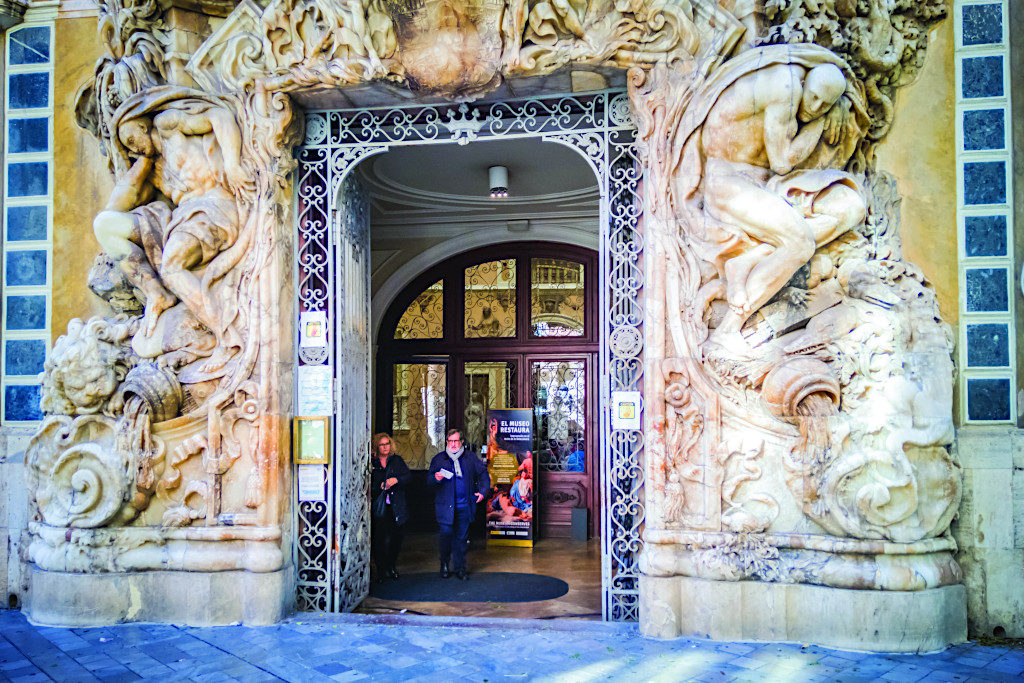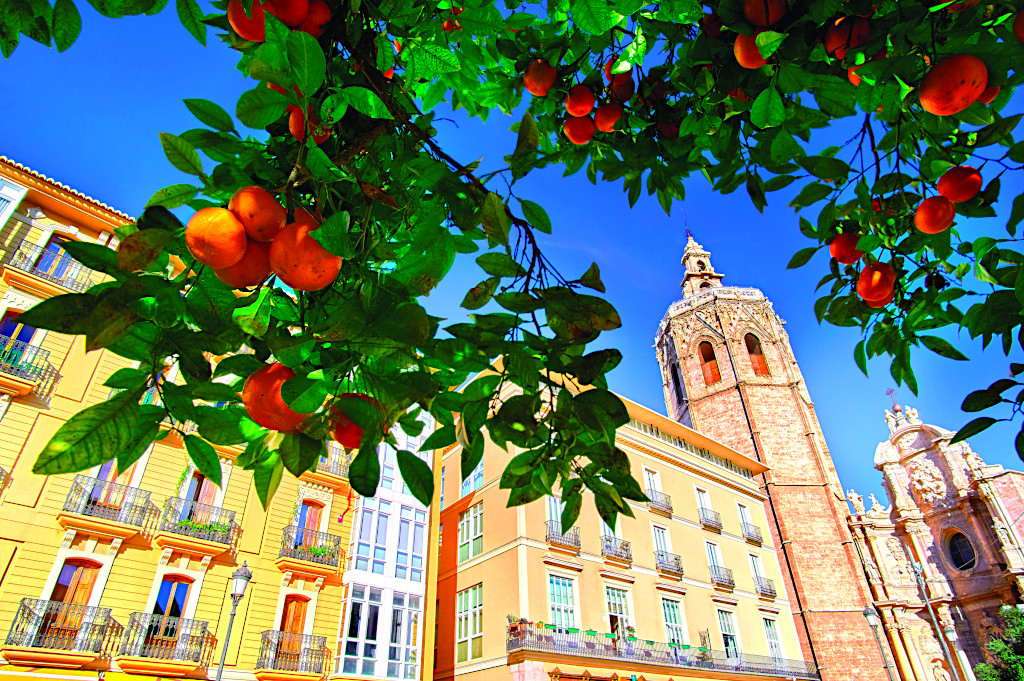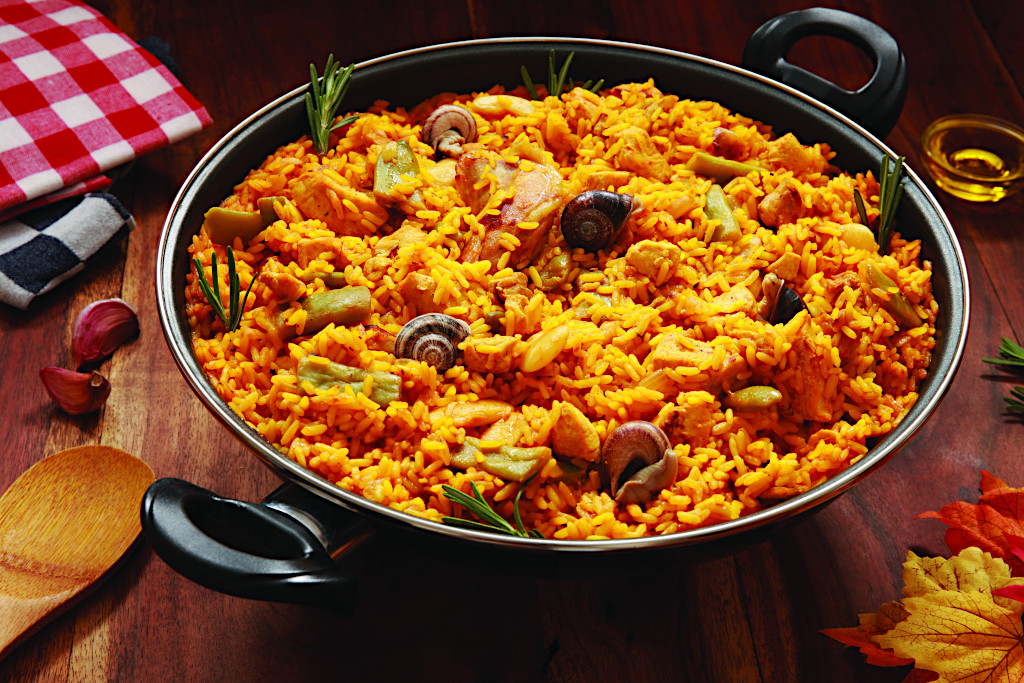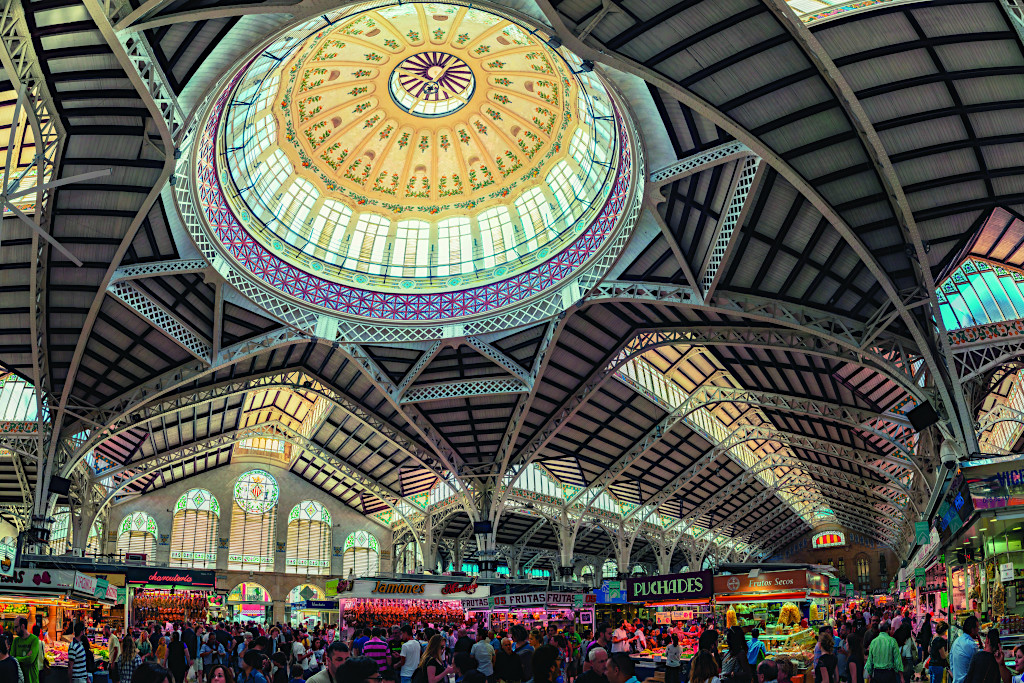We spent a good part of another day at the futuristic, Jetsons-like Ciudad de las Artes y las Ciencias (www.cac.es/va/home), a major arts and science museum. Constructed in 1998, the complex was designed by Spanish architects Santiago Calatrava and Félix Candela to echo a similar project built in Paris. Seven structures comprise the complex: an IMAX center and planetarium, an interactive science museum, an open-air oceanography park, opera house and performance center, and a covered plaza for sporting events. One of the elaborate pools featured a series of stunning sculptures by Spanish artist Jaume Plensa.
My partner’s birthday dinner was one of those unforgettable restaurant experiences, the kind you reminisce about frequently, like the first time we tried risotto at a restaurant just outside of Florence.

Entrance to National Museum of Ceramics
Photo: Joe Logan
Mercat Bar (Carrer de Joaquín Costa, 27, 46005. www.en.mercatbar.es) is one of five restaurants owned by chef Quique Dacosta, known as the most successful and celebrated chef in Valencia, earning the title of one of the 50 Best Restaurants in the World by Restaurant Magazine for his namesake restaurant. The menu at Mercat Bar is driven by seasonal ingredients in a market type setting that’s fun and casual. We ordered our firs t starter, intrigued by its name “Cold Pizza.” A pizza box arrived at our table a few moments later, and inside was a pizza with a most unus ua l c rust made of unswe e tened meringue and topped with sundried tomatoes and anchovies. We loved it so much, we may never go back to hot pizza! Our main course was made of sensational seafood enveloped in a puff pastry crust shaped like a whole fish. Dessert was American style a pple pie, ser ved wit h vanilla ice cream and a candle on top. Our adorably cute waiter spoke English and was kind enough to share tips about Valencia, while marveling at the fact that we lived in Paris. As two new members of the unofficial Mercat Bar fan club, we returned for lunch on our last day to feast on a bargain two-course lunch for 17.50€.

Plaza de la Reina
Photo: Razvan Ionut Dragomirescu
The old quarter of the city was our go-to place for shopping, restaurants, architecture, and museums. The dazzling architectural details of the Art Nouveau buildings rivaled those in Paris, with their ornate doors, mosaic tiled facades, embellished i ron ba l conies, and elaborately carved stone heads and statues.
The outside of the El Museo Nacional de Ceramica (Carrer del Poeta Querol, 2, 46002. www.culturay-deporte.gob.es/mnceramica/home) is a rococo dreamscape with decadent stone and ironwork. The former palace from the 15th century was refurbished in 1740 during the height of the rococo period, and what we discovered inside was just as grand. The courtyard entryway is made of a la baster, and there are ornately decorated window frames and wood slatted balconies. Rooms on the first floor were the private quarters of the former owner, Marquis de Dos Aquas, and included a sumptuous ballroom and a sitting room completely made of ceramic tiles, both containing much of the original furniture and accessories. The second floor is dedicated only to ceramics and features an authentic replica of a typical Valencian kitchen with 18th and 19th century ceramic, decorative panels, and mosaic tiles.
Atrip to Valencia wouldn’t be complete without trying one of their culinary delights and experiencing the local paella. Interestingly enough, the Valencian version of paella is served with rabbit and little or no seafood.
On our last day, we went to La Riua (Carrer del Mar, 27, 46003. www.lariua.com), a prize-winning restaurant known for its paella. It took a little getting used to not having to peel shrimp and open mussels, but the rabbit paella won us over. The interior of the restaurant felt authentically Spanish with tile floors, high-back wood chairs, and murals on the walls.

Traditional Paella Valenciana
Photo: SteAck
Following diner, we spent our final night strolling through the El Carmen neighborhood, next to the old quarter. The vibe was lively, fun, and young, with dozens of cafes, bars, and restaurants dotting the ultra-narrow streets. Many of the buildings in El Carmen were either boarded up or being renovated and every empty wall or billboard was claimed by a unique street artist to show off their work.
El Carmen is the hot spot for nightlife in Valencia, and we passed numerous bars, clubs, and music venues. We stumbled upon BuBu, a gay bear bar, and went inside for a drink. It was fairly lively and resembled a bar in Paris (The Bear’s Den), with attractive, burly men mostly in their 40s and 50s. The bartender spoke English, and he introduced us to a couple of his friends who also spoke English. They were super welcoming, and they bought the second round of drinks, which was a terrific send off for our last night in Valencia.
After returning to Paris and sorely missing Valencia, we realized it’s now our new favorite city in Europe.


